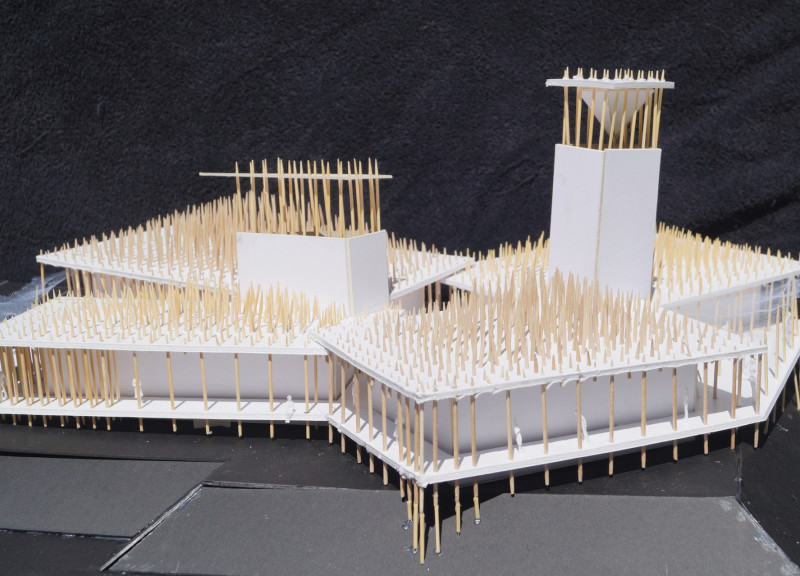5 key facts about this project
The Flamingo Visitor Center in the Al Wathba Wetland Reserve of Abu Dhabi provides an important space for education about the region's unique biodiversity. Inspired by the elegance of flamingos, the design effectively connects visitors to their environment. Arranged around a central courtyard, this configuration promotes an engaging experience, allowing easy access to nature and the learning opportunities it offers.
Structure and Aesthetics
The building is supported by a series of pink steel poles that play a crucial role in both the structure and the overall look of the center. These poles are organized to create varying densities, transitioning from clusters at the entrance to more open spaces toward the edges. This thoughtful arrangement reflects the natural posture of flamingos standing in a wetland, establishing a visual relationship between the building and its surroundings.
Light and Ventilation
Considerable attention has been paid to how light interacts with the interior spaces. Large overhangs block harsh sunlight while allowing soft, natural light to illuminate the rooms. This approach makes the indoor environment more comfortable. The overall design also promotes good air circulation, which is essential for keeping the space cool in the hot climate of Abu Dhabi.
Materiality
Local sarooj mortar has been chosen for the heavier structural elements, giving the building a connection to the traditional architecture of the region. This choice supports natural cooling methods important for maintaining a pleasant indoor climate. Additionally, mirrored ceilings enhance the sense of spaciousness within the pavilions, creating an interesting reflection of the surroundings.
Wooden decking covers the outdoor areas, relating to the pathways typically found in wetland settings. This design choice encourages visitors to explore the area in a more natural way. It helps ground the visitor center within its vibrant ecological context, reinforcing its purpose as an educational space. The details complement the experience while underscoring the connection between architecture and nature.























































